The Benefits of Yoga for Toning and Mindfulness: Your Complete Guide. Transform Your Body with These Yoga Techniques for Toning and Fitness. Yoga or Pilates? Which is Better for Toning and Flexibility?
Yoga, an ancient practice in India, has become increasingly popular in recent years due to its numerous physical, mental, and emotional benefits. From improved flexibility to stress reduction, yoga has a lot to offer. One common question that arises is whether yoga can tone your body. In this comprehensive guide, we will explore the toning benefits of yoga and provide practical advice on achieving a toned and sculpted physique through this ancient practice.
How Yoga Tones Your Body
Muscle Engagement and strength building
Yoga engages various muscle groups throughout the body, helping to build strength and tone muscles. Unlike traditional weightlifting exercises, which often focus on isolated muscle groups, yoga poses require multiple muscles to work together, resulting in balanced strength and tone.
Contents
Some examples of yoga poses that engage different muscles include:
- Core: Boat pose, plank pose, and side plank pose all target the abdominal muscles, lower back, and obliques, helping to create a solid and toned midsection.
- Legs: Warrior I, II, and III poses, as well as chair pose, work the quadriceps, hamstrings, and calves, building strength and definition in the lower body.
- Arms: Poses like downward-facing dog, upward-facing dog, and chaturanga dandasana target the biceps, triceps, and shoulders, leading to more toned and sculpted arms.
By incorporating a variety of yoga poses into your practice, you can effectively engage and tone multiple muscle groups, resulting in a balanced and toned physique.
Yoga’s Focus on Flexibility and Lengthening Muscles
In addition to building strength, yoga strongly emphasizes flexibility and lengthening the muscles. This focus on stretching and elongation contributes to a more sleek and toned appearance, setting it apart from traditional gym workouts.
To understand the difference between a yoga body and a gym body, consider the following comparison:
| Yoga Body | Gym Body |
|---|---|
| Tends to have long, lean muscles with a focus on flexibility | Often has more bulk and visible muscle mass |
| Focuses on balanced strength and flexibility | May emphasize isolated muscle group development |
| Encourages overall body awareness and alignment | Can lead to muscle imbalances and overdevelopment of specific areas |
Through its focus on muscle lengthening and flexibility, yoga can create a more elongated and sleek appearance while still providing the toning benefits many seek in their workouts.
1.3 Yoga and Improved Posture
Another essential aspect of yoga is its focus on proper body alignment and posture. Good posture contributes to a toned and confident appearance and promotes better overall health by reducing strain on the spine, joints, and muscles.
When practicing yoga, emphasis is placed on maintaining proper alignment and engaging the core muscles, which can help to correct postural imbalances over time. This improved posture can lead to a more toned appearance, as the muscles are more efficient and engaged.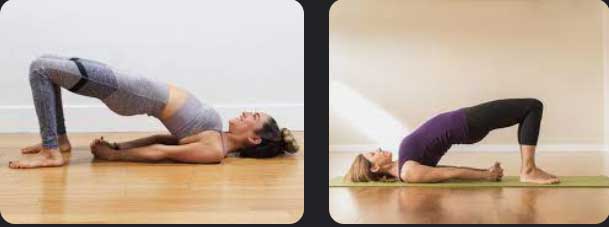
Consider the following tips for incorporating yoga into your routine to improve posture and achieve a more toned look:
- Prioritize core strength: Focus on poses that engage the core muscles, such as the plank, boat pose, and side plank, to build a solid and stable foundation for improved posture.
- Include balance poses: Incorporating balance poses, like the tree pose and half moon pose, can help to develop better body awareness and alignment, leading to improved posture.
- Practice proper alignment: Pay attention to alignment cues from your instructor or online resources, and adjust as needed to maintain an appropriate posture during your practice.
- Stretch tight muscles: Tight muscles can contribute to poor posture, so include stretches targeting areas like the hamstrings, hip flexors, and shoulders to promote better alignment.
By incorporating yoga into your routine and focusing on proper alignment and posture, you can achieve a more toned and confident appearance while enjoying the many other benefits this ancient practice offers.
Key Areas of Focus for Toning
Toning the Stomach. One of the most sought-after results of yoga is a toned and firm stomach. Yoga engages the abdominal muscles through various poses that require core stability and strength. Some examples of poses that specifically target the core are: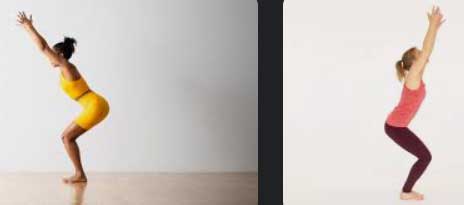
- Boat Pose (Navasana): This pose activates the entire core, including the rectus abdominis, transverse abdominis, and obliques.
- Plank Pose (Phalakasana): A full-body pose that primarily works the core; it strengthens and tones the abdominal muscles while also engaging the shoulders, arms, and legs.
Toning the Bum. Yoga works the glutes and hips, leading to a toned and lifted bum. Combining muscle engagement and stretching provides a well-rounded approach to toning this area. Some examples of poses that target the glutes and hips include:
- Bridge Pose (Setu Bandha Sarvangasana): This pose activates the glutes, hamstrings, and lower back muscles, helping to tone and lift the bum.
- Pigeon Pose (Eka Pada Rajakapotasana): A deep hip opener, this pose also works the glutes, making it an excellent choice for toning the bum.
Toning the Thighs and Legs. Yoga helps strengthen and tone the lower body by engaging the muscles in the thighs and legs through various poses. These poses often require balance, strength, and flexibility, contributing to a toned and sculpted lower body. Some examples of poses that target the thighs and legs are:
- Warrior Poses (Virabhadrasana I, II, and III): These poses work the entire lower body, engaging the quadriceps, hamstrings, and glutes, as well as improving balance and stability.
- Chair Pose (Utkatasana): This powerful pose engages the quadriceps, hamstrings, and glutes while working the core and upper body, making it an effective full-body toning exercise.
Types of Yoga for Toning
Yoga for Beginners. For those new to yoga, starting with beginner-friendly poses and sequences that focus on toning is essential. It allows individuals to build a strong foundation, gradually progress in their practice, and achieve desired results. Some beginner-friendly poses for toning include:
- Cat-Cow Pose (Marjaryasana-Bitilasana): A gentle movement that helps warm up the spine and engage the core muscles.
- Downward-Facing Dog (Adho Mukha Svanasana): This pose stretches the hamstrings and calves while engaging the upper body, core, and legs.
- Low Plank (Chaturanga Dandasana): A beginner-friendly variation of the plank pose that strengthens the core, arms, and legs.
Vinyasa Yoga, often called „flow yoga,“ is a dynamic and fluid style that links breath to movement. The continuous flow of poses helps to increase heart rate, build strength, and tone the body. Vinyasa yoga cultivates a solid mind-body connection and supports a well-rounded fitness routine by synchronizing breath and movement. The fast-paced nature of Vinyasa yoga can be more challenging but offers excellent toning benefits, making it a popular choice for those looking to sculpt their physique.
Power Yoga is a more vigorous and fitness-focused form of yoga that emphasizes strength, flexibility, and balance. It’s an excellent choice for those who want to simultaneously tone their body and build muscle. Power yoga typically consists of challenging poses requiring strength and endurance, providing a full-body workout.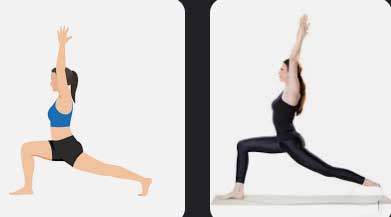
Benefits of power yoga for toning and building strength include:
- Increased muscle definition: The challenging poses in power yoga require significant muscle engagement, leading to improved muscle tone and definition.
- Enhanced core strength: Power yoga often incorporates a variety of core-strengthening poses, helping to develop a solid and toned midsection.
- Improved balance and coordination: The practice of power yoga helps to develop balance, coordination, and body awareness, which contribute to a toned and well-sculpted physique.
Yoga vs. Pilates for Toning
Overview of the Differences Between Yoga and Pilates
While both yoga and Pilates offer numerous health benefits, including increased flexibility, strength, and balance, they differ in their origins, principles, and approaches to toning and overall fitness. Yoga, an ancient practice originating in India, emphasizes the union of mind, body, and spirit through various physical postures, breathing techniques, and meditation. On the other hand, Pilates was developed in the early 20th century by Joseph Pilates as a system of exercises designed to strengthen the body’s core muscles and improve posture, alignment, and body awareness.
Comparison of Their Approaches to Toning and Overall Fitness
Yoga and Pilates both contribute to toning and overall fitness, but their approaches differ in several ways:
- Yoga focuses on building strength and flexibility through a series of static postures held for an extended period. This isometric muscle engagement leads to improved muscle tone and elongation.
- Pilates emphasizes controlled, precise movements that target specific muscle groups, particularly the core muscles. This concentrated focus on muscle engagement helps to create a lean, sculpted appearance.
- Yoga often incorporates a spiritual component, emphasizing mindfulness, breathwork, and the mind-body connection. Pilates, while promoting body awareness and control, focuses more on physical conditioning and muscle development.
Recommendations for Combining Both Practices for Optimal Toning Results
For individuals seeking optimal toning results, combining yoga and Pilates can offer a well-rounded fitness routine targeting different physical fitness aspects. Here are some recommendations for incorporating both practices into a workout regimen:
- Alternate between yoga and Pilates sessions: Dedicate separate days to yoga and Pilates to ensure that each practice receives focused attention. This approach allows for a balanced workout routine that targets various muscle groups and enhances overall fitness.
- Choose complementary styles: Select yoga and Pilates styles that align with individual fitness goals. For instance, those looking to build strength and muscle tone might opt for power yoga and a Pilates mat class.
- Blend elements from both practices: Incorporate specific yoga poses or Pilates exercises into a single workout session, focusing on each aspect that contributes to toning and overall fitness. For example, combine yoga’s flexibility-enhancing poses with Pilates’ core-strengthening exercises for a well-rounded toning session.
By integrating yoga and Pilates, individuals can create a comprehensive fitness program that targets muscle tone, flexibility, and overall wellness, ultimately achieving the desired toned and sculpted appearance.
How Long Does It Take for Yoga to Tone Your Body?
Factors Influencing the Time It Takes to See Toning Results from practicing yoga can vary significantly from person to person. Several factors can influence the timeline, including:
- Individual fitness levels: Those new to exercise or with a lower baseline fitness level may take longer to see noticeable toning results compared to those already physically active.
- Frequency and duration of practice: The more often and consistently an individual practices yoga, the sooner they may observe toning improvements.
- The intensity of practice: Engaging in more challenging yoga styles, such as power yoga or vinyasa, may expedite toning progress compared to gentler practices like restorative or yin yoga.
- Genetics and body composition: Each person’s unique genetic makeup and body composition can impact the rate at which they develop muscle tone.
- Diet and lifestyle: A balanced and healthy lifestyle can support muscle development and overall fitness, making it easier to achieve desired toning results.
Typical Timeline for Seeing Toning Improvements. While it is difficult to provide a precise timeline for when an individual will see toning results from practicing yoga, many people may begin to notice improvements within a few weeks to a couple of months. It’s important to remember that progress is gradual, and the key to long-term success lies in maintaining a consistent practice and staying patient.
Consistency and Regular Practice. Consistency and regular practice is essential for achieving and maintaining a toned physique through yoga. Establishing a routine that includes practicing yoga several times per week can help to build strength, flexibility, and endurance, all of which contribute to improved muscle tone.
In addition to practicing yoga regularly, individuals should consider incorporating complementary forms of exercise, such as cardio and strength training, to support their toning goals further. Additionally, maintaining a balanced diet, staying hydrated, and getting adequate rest can all contribute to overall health and well-being, making it easier to achieve the desired toned appearance.
Tips and Advice for Achieving a Toned Body with Yoga
Tips for Incorporating Yoga into Your Fitness Routine
Incorporating yoga into your fitness routine can be a great way to tone your body while promoting relaxation and stress relief. Here are some tips to help you get started:
- Start small: If you’re new to yoga, start with a beginner-friendly class or video and gradually work up to more advanced poses.
- Mix it up: Try different types of yoga to keep things interesting and challenge your body in new ways.
- Find a buddy: Practicing yoga with a friend or partner can provide extra motivation and support.
- Make it a habit: Practice yoga regularly, even just a few minutes daily.
- Listen to your body: Don’t push yourself too hard or try poses that feel uncomfortable or painful. Modify or skip poses as needed to avoid injury.
Recommendations for the Frequency of Yoga Practice for Toning
To see toning results from yoga, it’s important to practice regularly. Aim to practice at least 2-3 times a week, lasting 30-60 minutes each session. Consistency is vital, so stick to a regular schedule and make yoga a part of your daily routine.
Advice on Combining Yoga with Other Forms of Exercise for Optimal Results
While yoga can be a tremendous standalone practice for toning the body, combining it with other forms of exercise can help you achieve even better results. For example, incorporating strength training or cardio into your routine can help you build muscle and burn fat in addition to toning with yoga. It’s essential to find a balance that works for you and to listen to your body to avoid overtraining or injury.
Plank pose or Phalakasana
To use the Plank pose for toning, start by getting into a push-up position with your hands and feet on the ground and your arms straight and shoulder-width apart. Your body should form a straight line from your head to your heels. Engage your core muscles and hold the pose for as long as possible, aiming for at least 30 seconds. Try keeping the posture for extended periods or adding variations, such as lifting one leg or arm off the ground. Incorporating Plank Pose into your regular yoga routine can help tone your abs, arms, and shoulders.
 As a result of the inert nature of this pose, your abductors, shoulders, obliques, and glutes transform more potent. When carried out continuously, no less than two occasions every week, this pose is helping increase a lean and durable midsection. Get started this pose on all fours together with your palms spreading moderately. The first step foot again after which some other. Your shoulder will have to stay stacked over the wrists whilst urgent the heels in opposition to the again of the room. Fold for your tailbone in order that your butt does now not stick up within the air and sing his own praises the distance between your shoulder blades to make sure that your chest isn’t sinking. Embody your quads and your glutes, after which breathe. Cling on for approximately 30 seconds to about 3 mins. Repeat this for approximately 3 to five mins, resting in between if wanted.
As a result of the inert nature of this pose, your abductors, shoulders, obliques, and glutes transform more potent. When carried out continuously, no less than two occasions every week, this pose is helping increase a lean and durable midsection. Get started this pose on all fours together with your palms spreading moderately. The first step foot again after which some other. Your shoulder will have to stay stacked over the wrists whilst urgent the heels in opposition to the again of the room. Fold for your tailbone in order that your butt does now not stick up within the air and sing his own praises the distance between your shoulder blades to make sure that your chest isn’t sinking. Embody your quads and your glutes, after which breathe. Cling on for approximately 30 seconds to about 3 mins. Repeat this for approximately 3 to five mins, resting in between if wanted.
How to use Downward-Facing Dog for toning?
Downward-Facing Dog is an outstanding yoga pose for toning the upper body, especially the arms, shoulders, and back. To perform this pose: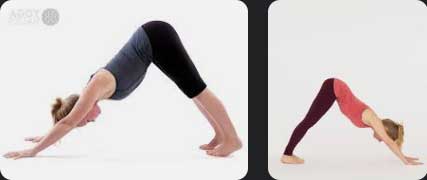
- Start on your hands and knees, with your hands shoulder-width apart and your knees hip-width apart.
- Spread your fingers wide and press your palms and fingertips into the ground.
- Curl your toes under and lift your hips up and back, straightening your legs and arms to form an inverted V-shape with your body.
- Press your heels towards the ground and reach your tailbone towards the ceiling.
- Hold the pose for 5-10 deep breaths, then release.
To make the most of this pose for toning, focus on engaging your arms, shoulders, and upper back muscles as you hold the pose. You can also try variations such as lifting one leg off the ground, walking your hands towards your feet or pedaling your feet to stretch the calves and hamstrings. Practicing a regularly Downward-Facing Dog can help you strengthen and tone your upper body while improving hamstrings and calves’ flexibility.
How to use Warrior II Pose for toning?
Warrior II Pose is an excellent yoga pose for toning the legs and glutes while improving balance and concentration. To perform this pose:
- Start standing with your feet about 3-4 feet apart.
- Turn your right foot out 90 degrees and your left foot in slightly.
- Raise your arms to shoulder height, with your palms facing down.
- Bend your right knee and sink your hips towards the ground, keeping your left leg straight.
- Ensure your knee stays directly over your ankle and doesn’t extend past your toes.
- Hold the pose for 5-10 deep breaths, then repeat on the other side.
To make the most of Warrior II Pose for toning:
- Focus on engaging your leg muscles as you hold the pose.
- Press down through the outer edge of your back foot and feel the inner thigh muscles engage.
- Sink your hips toward the ground to increase the intensity. You can also try variations such as extending your arms overhead, bending your front elbow and resting it on your thigh or adding a reverse warrior by reaching your back towards the ceiling.
Practicing Warrior II Pose regularly can help tone your legs and glutes while improving balance and concentration.
How to use Boat Pose for toning?
Boat Pose is an effective yoga pose for toning the abs and lower back muscles. To perform this pose:
- Start seated with your knees bent and your feet on the ground.
- Place your hands on the ground behind you, fingertips facing towards your feet.
- Lean back slightly and lift your feet, bringing your shins parallel to the floor.
- Straighten your arms and lift your chest towards the ceiling, keeping your core muscles engaged.
- Hold the pose for 5-10 deep breaths, then release.
To make the most of Boat Pose for toning:
- Focus on engaging your abs and lower back muscles as you hold the pose.
- Keep your spine long, and avoid rounding your shoulders or hunching forward. If you want to increase the intensity, you can straighten your legs or lower your legs toward the ground without touching them.
- Practicing Boat Pose can help tone your abs and lower back muscles while improving core strength and balance.
God, Grant Me The Serenity. Prayer, Full Version. Meaning + Origin
Conclusion
Yoga is a highly effective and versatile exercise for toning the body. By incorporating yoga into your fitness routine and practicing regularly, you can enjoy a wide range of benefits, including improved strength, flexibility, balance, and mental well-being. So why not see the transformative effects for yourself?
References:
- „The Women’s Health Big Book of Yoga“ by Kathryn Budig
- „The Yoga Bible“ by Christina Brown
- „Yoga Anatomy“ by Leslie Kaminoff and Amy Matthews

Margarita Alexieva is an editor in numerous health departments of various national and regional daily and weekly newspapers and magazines. She has been in journalism since 1992, and in recent years she has been mainly focused on the topics of news, healthcare and medicine.
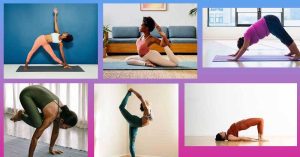
It’s important to note that while people of all ages can practice yoga, it’s crucial to age-related limitations and considerations. For example, older adults may need to modify certain poses or avoid certain types of yoga altogether to prevent injury.
I disagree that yoga can be used as a form of cross-training to enhance performance in other physical activities. While yoga can improve flexibility and balance, it doesn’t necessarily translate to improved performance in other sports or activities requiring different types of strength and conditioning.
While I agree that yoga can be a low-impact exercise, it’s important to note that certain types of yoga, such as power or hot yoga, can be quite intense and may not be suitable for everyone. It’s important to listen to your body and choose a yoga style that matches your fitness level and goals.
I don’t think yoga is accessible to almost anyone. As someone with limited mobility, I find many yoga poses difficult or impossible. It’s important to recognize that not everyone can do every pose, and some may need modifications.
I disagree that yoga can be just as effective for toning as weight lifting. While yoga can build strength and tone the muscles, weight lifting allows for more precise and targeted muscle activation and can result in greater muscle mass and definition.